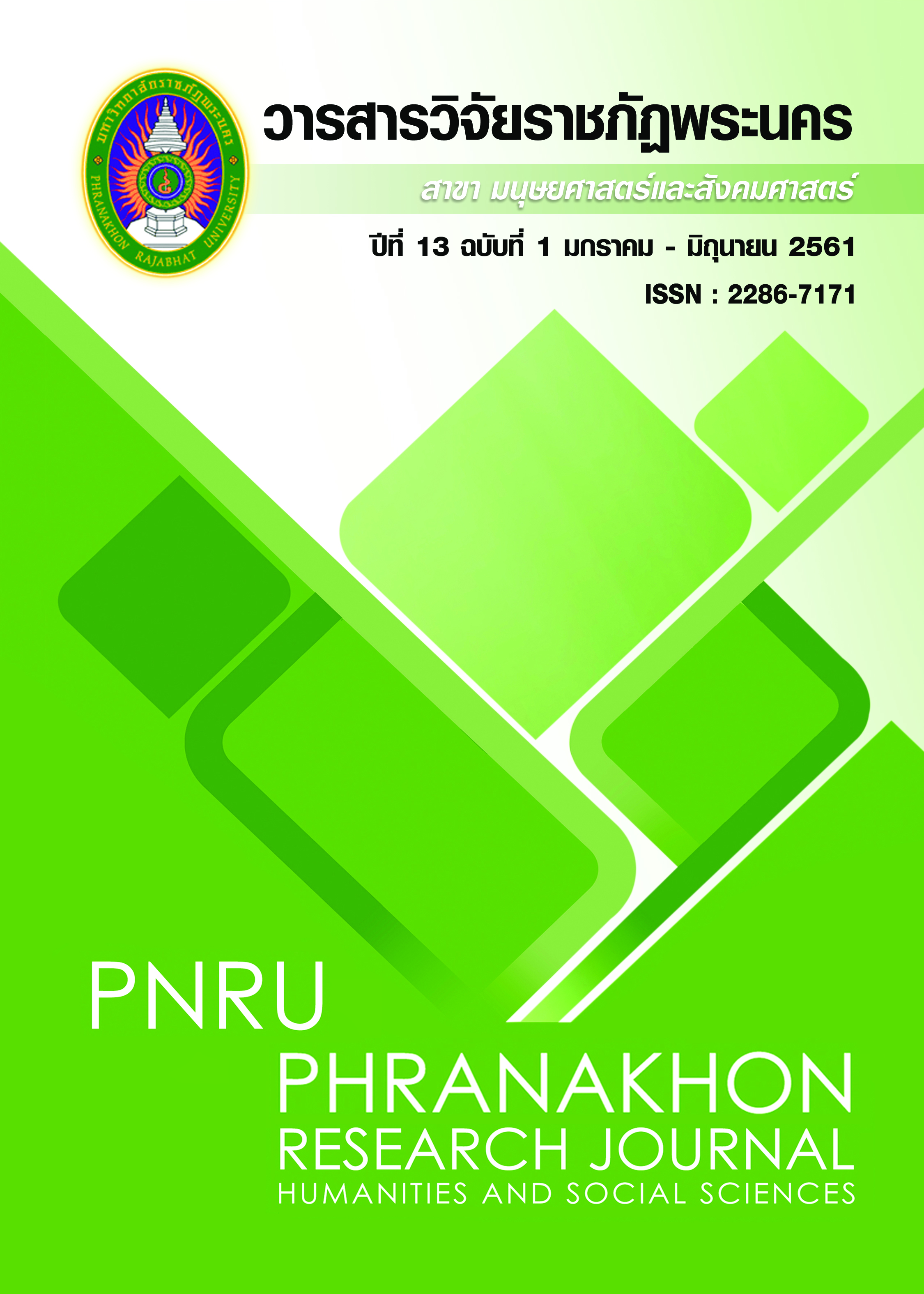การพัฒนารูปแบบการพัฒนาศักยภาพองค์การของเทศบาลเมืองคูคต
Main Article Content
Abstract
The purpose of this research is composed of four objectives which are 1). examine the organizational competency in Khukhot municipality 2). explore the problems that affected to the organization and 3). develop the organizational competency model for Khukhot municipality. This research uses a mixed method which is included Participatory Action Research (PAR) approach, documentary research, and quantitative method. A study of 711 populations was divided into three groups which are 1). executive officers in Khukhot municipalities, 2). officers in Khukhot municipalities, and 3). residents in Khukhot municipality. The study applied various data collection instruments including interviews, focus group, observations, and muestionnaire. The descriptive statistic tool was for analyzing quantitative data while the combination between analytic induction and topology approach were for analyzing qualitative data. The finding reveals that developing a model of organizational competency in KhuKhot municipality consists of three domains. First, Khukhot municipality organizational competencies are considered by three attributes. To begin with, individual competencies. Next, the organizational culture. Last, communication that builds people’s trust. In overall, the organizational competencies and organizational culture of Khukhot municipality are at a high level while communication attribute is at a moderate level. Second, the organizational competency in Khukhot municipality is comprised of five issues, namely, sensing of the unfairness evaluation system in an organization, employee learning and responsibility problems addressing by job design, compromising strategy to avoid an internal conflict, and unclear organizational development goal. Third, a competency development model for Khukhot municipality is suggested to be focused on 1). a review of assessment system 2). ownership embodies of the community by enhancing their roles in communication process 3). adaptability and competency-based approach to job design 4). a clear goal in organizational development and 5). an adjustment in strategic planning of Khukhot municipality.
Article Details
Each publish articles were copyright by Phranakorn Rajabhat University
Any contents which appeared in each articles in the journal were authors personal opinion. It did not relate to Phranakorn Rajabhat University and other instructors in the university. Each authors would take responsibility on their articles. If there are any mistake, the authors will take responsibility themselves
References
Chisthensen and Gazley (2008). Capacity for public administration: analysis of meaning and measurement.
Creswell, John W. (2014). Research design : qualitative, quantitative, and mixed methods approaches 4th ed.
Denison, D. R., H. J. Cho, and J. Young, (2000), Diagnosing Organizational Culture: Validating a Model and Method, Working Paper, International Institute for Management Development, Lausanne, Switzerland.
Fabrice Roghe, Andrew Toma, Julie Kilmann, Ralf Dicke, and Rainer Strack (2012). Organization of The Future-Designed to Win : Organizational Capabilities Matter. BCG The Boston Consulting Group.
Forbes, and Laurence E. Lynn, Jr. 2006. “Public Management and Government Performance: An International Review.” In Boyne, George, A., Meier, K. J., O'Toole, L. J. Jr., and Walker, R. M. Public Services Performance: Perspectives on Measurement and Management, Cambridge, Cambridge University Press.
George, D., & Mallery, P. (2003). SPSS for Windows step by step: A simple guide and reference. 11.0 update (4th ed.). Boston: Allyn & Bacon.
Gill, D, and Stone, R. (2010). Fairness and desert in tournaments. Games and Economic Behavior. 69: 346–364.
Lado Augustine A.; Boyd Nancy G. and Wright, Peter. (1992). A Competency-Based Model of Sustainable Competitive Advantage: Toward a Conceptual Integration. Journal of Management. 18 (March): 77-91.
Office of the Civil Service Commission (2009). Core Competency Handbook Description and Behavioal Indicators Examples. P & E Co., Ltd. Nonthaburi.
Parker and Bradley (2000). Organisational Culture in the public Sector: Evidence form six Organisations. The International Journal of Public Sector Management, 13 (2-3),125-141.
Pisit Jomboonrueang (2010). The organizational competencies model for Tambol Administration Organization (TAO). Doctor of Public Administration.National Institute of Development Administration
Rachel Parker, Lisa Bradley, (2000),"Organisational culture in the public sector: evidence from six organisations", International Journal of Public Sector Management, Vol. 13 Iss: 2 pp. 125 – 141
Suebwong Kalawong (2012), The New Public Management Thaksin’s government: successful and failure. ACADEMIC JOURNAL BANGKOKTHONBURI UNIVERSITY Vol.1 November 2012-April 2013 ISSN.2286-6590, (pp.62-82)
Shigetom I and Shinichi. (2006). Organizational Capability of Local Societies in Rural Development: A Comparative Study of Microfinance Organizations in Thailand and the Philippines.ID E Discussion Paper. No. 47.2006.2.Academic Research Repository at the Institute of Developing Economies. Japan
Tena and Bou-Llusar (2005). To what extent do enablers explain results in the EFQM excellence model. Inter national Journal of Quality and Reliability Management, 22 (4),337-353.


